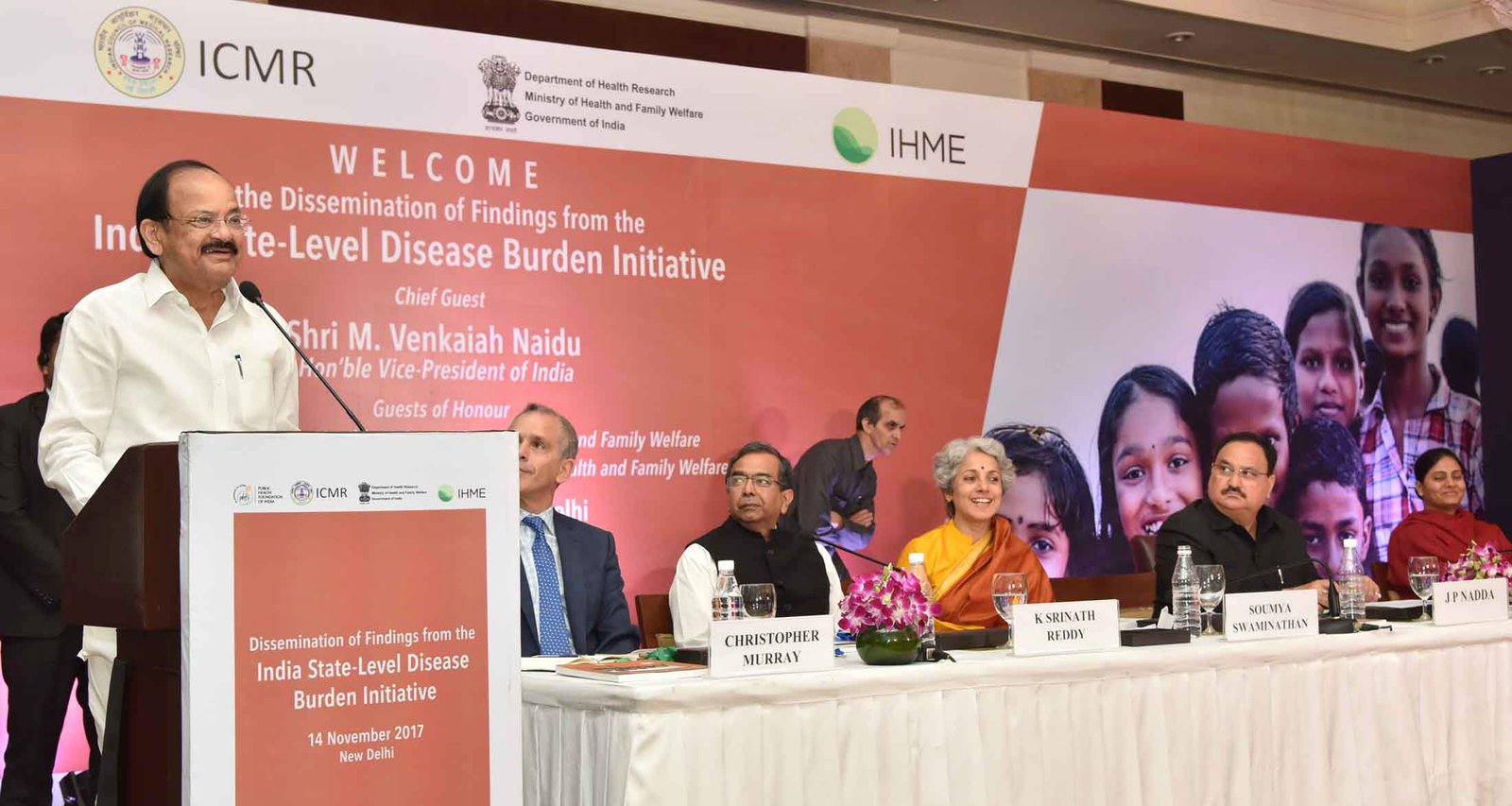M Venkaiah Naidu releases the findings of ‘India State Level Disease Burden’ report
November 15, 2017 | Wednesday | News
The India State-level Disease Burden Initiative, a joint initiative between the Indian Council of Medical Research (ICMR), Public Health Foundation of India (PHFI), and Institute for Health Metrics and Evaluation (IHME) in collaboration with the Ministry of Health and Family Welfare
M Venkaiah Naidu, The Vice President of India has recently released the findings of ‘India State Level Disease Burden’ report of Indian Council of Medical Research (ICMR).
J P Nadda, Union Minister of Health and Family Welfare, Anupriya Patel, Minister of State for Health and Family Welfare, Dr. Soumya Swaminathan, Secretary (DHR) and DG (ICMR) and Dr. Vinod Paul, Member, NITI Aayog were also present.
The India State-level Disease Burden Initiative, a joint initiative between the Indian Council of Medical Research (ICMR), Public Health Foundation of India (PHFI), and Institute for Health Metrics and Evaluation (IHME) in collaboration with the Ministry of Health and Family Welfare, Government of India along with experts and stakeholders associated with over 100 Indian institutions, released the first comprehensive set of state-level disease burden, risk factors estimates and trends for each state in India to inform health planning to reduce health inequalities amongst states in India. These estimates are based on analysis of all identifiable epidemiological data from India over quarter of a century.
Addressing the participants, the Vice President of India stated, “Achieving good health for all of India’s population is an important goal of the Government of India and a foundation for further social and economic development. The Vice President further stated that the health status of Indians has been improving since Independence. The life expectancy of a person born in India in 1960 was 40 years, which has increased to about 70 years now. Of every 1000 live children born in India in 1960, about 160 died in the first year, but now this death rate of infants is about a fourth of that level.”
In his address, the Vice President cautioned that in order to do better, several things need to happen. These include higher priority for health in the country’s policy making and enhanced resources for preventive and public health measures. There should be adequate mechanisms at the ground level for keeping Indians healthy and for suitable healthcare when they fall sick. We should also have a solid knowledge system that enables comprehensive tracking of the health and disease burden trends in every part of the country.”
Speaking at the function, J P Nadda said, “the Health Ministry along with the state governments and other important partners in the country is making serious efforts to enunciate provision for health services that are suitable for the health situation of particular state, mainly through the public sector. “In this regard, the data and results shared by the India State-level Disease Burden Initiative today in its report, scientific paper, and the online visualization tool will serve as a useful guide for fine-tuning data driven health planning specific for health situation of each state of the country.”
Speaking at the function, Anupriya Patel said, “The data and results shared by the India State-level Disease Burden Initiative today in its report, scientific paper, and the online visualization tool will serve as a useful guide for fine-tuning health planning in each state of the country. The burden due to non-communicable disease and injuries has overtaken the burden due to infectious and maternal-child diseases in every state of India, though this happened in some states about three decades ago and in some other states more recently. This means that the more developed states that had this transition a long time ago need to go on a war footing to control the rapidly rising burden of major non-communicable diseases and injuries.”










